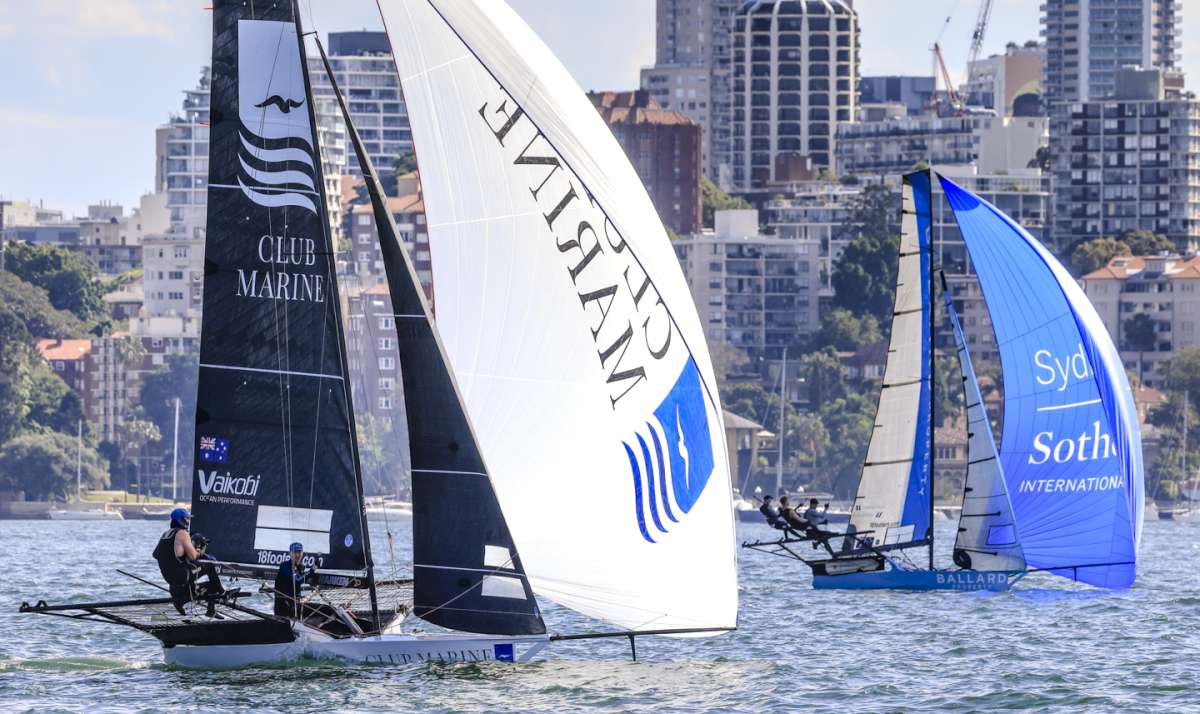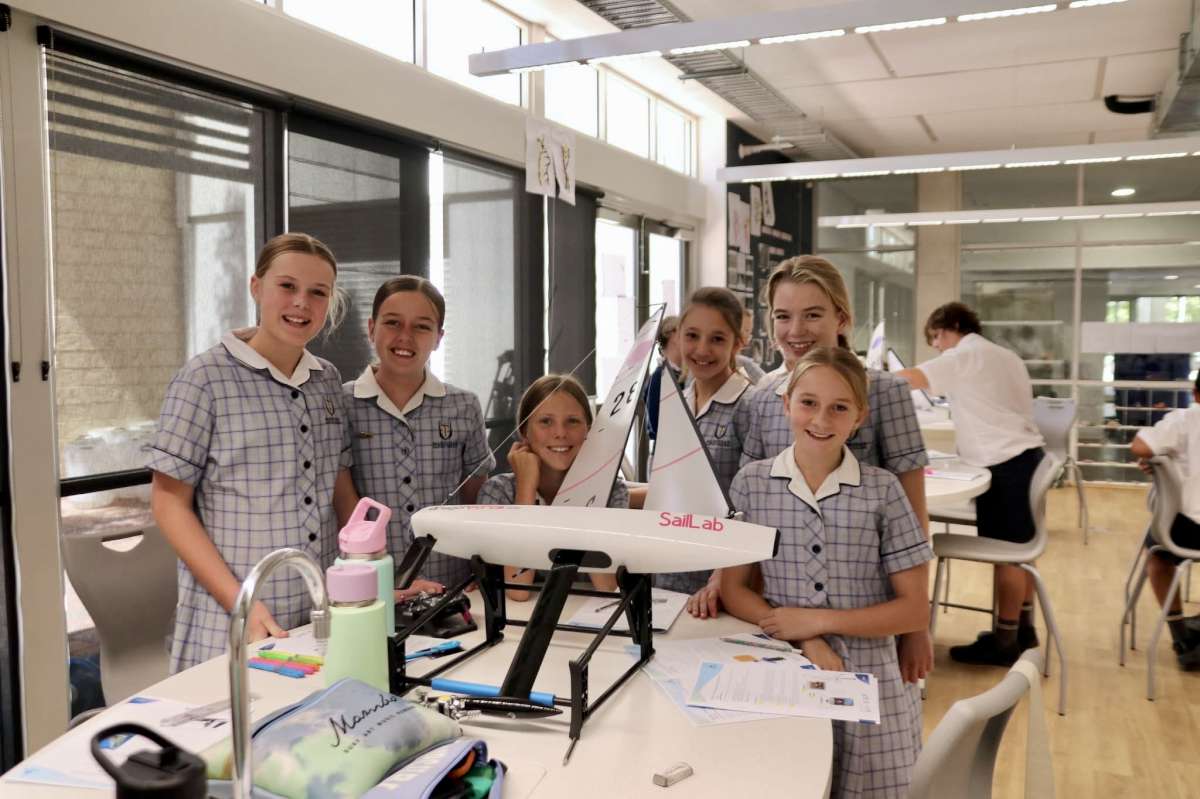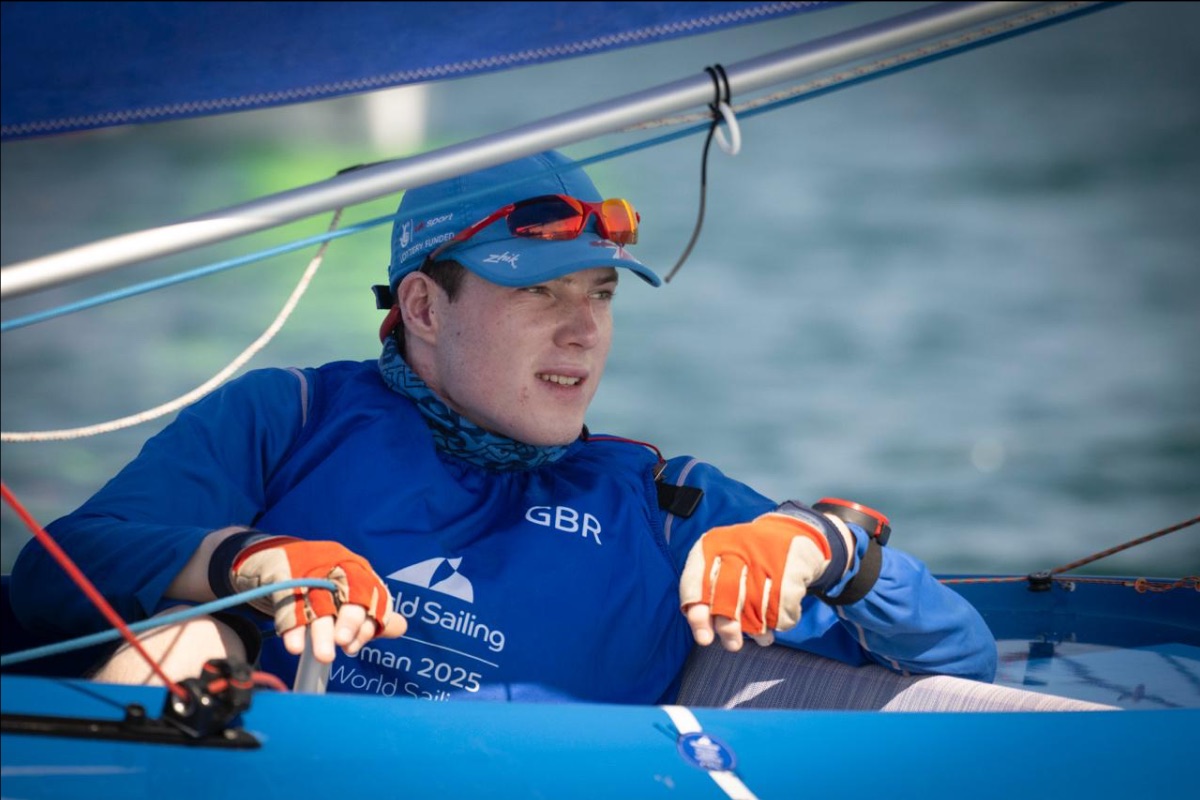Destinations: West Indian Ocean
World girdling sailor Lynelle Parker and husband Lloyd found their voyage west towards Africa an intoxicating mix of scenes and scents.
A popular passage west across the Indian Ocean from both northern Australia and from South-East Asia makes a landfall in the Chagos Archipelago. Yachts often hold up here waiting in the secluded atolls until the weather patterns change and they can continue west to either the Seychelles or Madagascar.
We chose a seldom-sailed route which would take us due west from Male Island in the Maldives until we reached 60 degrees east longitude before dropping south over the equator to make landfall in the Seychelles. We had studied the Indian Ocean pilot charts and realised that this would be a pretty slow passage with light winds, maybe even a lot of motoring. But an easy sea and, of course, the squally weather we knew would come as we crossed over the equatorial regions and into the southern hemisphere.
For sure, many other yachts would have passed this way before us, but we only had knowledge of two. One of them took this route in 2005 and the other was on passage ahead of us. They were eight days ahead of us, so we didn’t see them on the horizon. In fact, for the entire 11 days we were at sea, we didn’t see another vessel ‘ not one. The occasional visits from dolphins were always a highlight and we never tired of watching these wonderful creatures playing at our bow.
Alone on a long passage when conditions are calm and balmy, I often reflect upon how very lucky Lloyd and I are to be allowed to enjoy some of life’s most unique experiences. One that I find difficult to absorb is that sometimes we are the only two people for a thousand or so nautical miles. Birds alight on our dodger at night and the occasional fish lands on our decks but apart from these little diversions we are totally alone with the boat, our books and our music for company.
The winds were light, and for all the sea and swell we encountered, we could just as well have been sailing on a lake. As we passed south over the equator, we found the squally weather. It was 10 days and nights of wonderful sailing ‘ and motoring. And it’s been my experience that we always have to pay for our good days on the water, and right on queue along came the mother-of-all squalls. Wind and rain for hours before it all cleared and the sky once again filled with a blanket of stars. Within an hour or so, the white caps were gone and we were left bobbing along again in an easy over sea.
On the morning of the 11th day we could see shrouded in cloud the high mountainous island of Mahe. We arrived in the Seychelles at the end of March. The entrance to Port Victoria is safe and the anchorage inside the small harbour looked snug and comfortable. It was a trouble-free check in and within hours we were seeking out the things we miss most at sea; a long drink in a glass filled with ice cubes, ice-cream, endless water for long showers and even longer laundry sessions. Within two days, we knew for sure we would enjoy every minute of the two months we planned to spend in this remote and incredibly beautiful part of the world. The Seychelles is one of those places where you just want to get out the cheque book and buy up the real estate!
We took many sorties around Mahe Island in Chappie and explored the island on foot and by car. We were lucky enough to be exploring the anchorages before the south-easterly trades had kicked in to make the anchorages a tad rolling. We cruised the outlying island of Praslin, discovered the legendary coco de mer and spent 14 glorious days tied stern-to in the quay of what has to be one of the world’s best-kept secrets ‘ the island of La Digue. We rented bicycles every day and peddled our way over every road on the island. La Digue is the fourth largest island in the Seychelles (just five kilometres by three) so riding the small network of roads didn’t take long. Exploring the huge pink granite rocks that seem to have simply exploded out of the sea and lie surrounding the island, together with absorbing the rhythm of life ashore, seemed to fill our days.
How could two months fly by so quickly’ It did as we sailed, explored, bush-walked, made many friends and sadly soon found ourselves re-provisioning, refuelling and generally regrouping for our next passage westward to Eastern Africa.
At some point during these two lazy months in the Seychelles, we changed our minds about the route we would sail. It was a complete ‘about-turn’ and instead of Mayotte, Madagascar and around South Africa, we decided to sail to East Africa to Tanzania and Kenya and north into the Red Sea to the Mediterranean. We had the cruising guides and charts for both routes on board. The only thing missing was the few charts we would need to enter the Mediterranean from Port Said and we figured we could find them somewhere when we reached Egypt.
We sailed from the Seychelles in late May: the 1000nm passage which would take us initially over the top of the Amirante Group of the Seychelles, then south-west putting as much southerly in our course as the southerly winds would allow with comfort so that we could eventually ease off the breeze as we sailed more westward to make landfall on the Tanzanian coastline near Mafia Island.
Our passage out and over the Amirantes was a non-event. The following few days as we sailed higher on the breeze, life was a bit lumpy but we soon forgot this as we eased off westward on the last leg of the passage. We were five days at sea before we sighted our first ship ‘ off to starboard just as we sailed into another huge squall.
As we approached the East African coastline we needed to be very mindful of the north-setting East African Coast Current that is quite strong. If we hadn’t laid off a course allowing for this current, we might easily have found ourselves making landfall much further north than we had anticipated. Somehow we managed to get it all in the right perspective and Lloyd’s calculations put us pretty much where we wanted to be.
African landfall
It’s been said that you can smell Africa long before you can see it. We wondered if this would happen to us. It did ‘ and for 24 hours before we made landfall the air was suddenly warmer in our nostrils and I could distinguish the smell of burning wood not unlike the smell that fills the air on a hot dry afternoon in the bush of outback Australia.
We were 80nm east of the coastline with two to three knots of positive East African Coast current and a pleasant south-westerly breeze kicking us along westward to our landfall. There was more shipping now and the occasional fishing fleet crossed our bow.
Tanzania has some 500nm of coastline and the cruising is pleasant with rivers, islands and lots of reefs to explore. But we were interested in the land travel in Tanzania more than anything else. It is possible to check in at several ports along the southern coastline, but we choose to do this in Dar es Salaam and proceeded directly to the Dar es Salaam Yacht Club.
Our anchor had barely set when we were treated to a torrential downpour from a passing squall. It was as if someone was saying, ‘Welcome to Africa!’ The yacht club is rather an ‘up-town’ sort of place and a favourite watering hole for expats. Cruising yachts sit at anchor outside the main moorings ‘ not on a secure mooring; roll quite badly sometimes, and for this you are required to pay $US80 a week. They do throw in the first five days for free. On the other hand ‘ the drinks were full of ice, the showers hot and steamy, and I could send out my laundry. Every night we could go ashore for seafood pizza and chicken a la anything we wanted! Also, the yacht club supplies a club dinghy to transport you from your boat to the clubhouse. This happens mostly because the shoreline is not always conducive to a comfortable landing in your dinghy. To get ashore, we called on the VHF ‘This is Chappie ‘ dinghy-dinghy-dinghy’. A few minutes later a young man with a huge smile would come alongside greeting us as he would his best friend.
Often checking into a country is so easy. Sometimes all of the officials visit your boat bringing the necessary paperwork with them. They stay aboard just long enough for everyone to have a pleasant enough exchange then they leave you to get squared away.
This is not one of those ports! It took the best part of a whole day to find Immigration, Customs and the Port Captain. Time-consuming yes, but all it cost was our time and we had a pleasant exchange with the locals; saw some parts of the Port confines that I’m sure no one has visited for more than a century. Checking out on the other hand was easy.
We stayed a week or more enjoying just being by the shore. Every day dhows of all shapes and sizes would glide past Chappie on their way to somewhere, coming very close and calling a greeting to us before they would tack off and wave goodbye. I’ve never seen such a pretty sight as a couple of dhows passing by, framed in a perfect sunset.
We visited the local craft markets. I tried to buy a famous Tinga Tinga painting, but there was no respite from the touts wanting to haul you into their shops. I just couldn’t do it for longer than half an hour and in the end frustrated and angry we left the markets empty-handed.
Despite all its frustrations, we did enjoy Dar es Salaam. It is a welcoming, relaxed but bustling city and we were sad to leave. As we sailed away from their little harbour we thought it was probably worth the $US80 a week after all.
Lying 20nm off the coastline of Tanzania, north-east of Dar es Salaam, is the fabled island of Zanzibar. Evidence of this island’s rich and fascinating history is everywhere: the labyrinth of twisting streets and alleys that make up Stone Town; the old slave markets; the s
Trading ships have been sailing to and from Zanzibar harbour on their way to Persia, Arabia and India for over 2000 years. It’s still a busy little port and we were pretty sure no one was going to notice us as we sailed past the harbour and on to Mtoni resort to anchor just offshore. We couldn’t have been more wrong! Down at Immigration and Customs that afternoon, it seemed everyone had noticed us. Sailing Tanzanian waters, yachts are required to have a ‘transire’. (It’s a cruising permit of sorts, declaring that you are carrying no cargo.) You must present this at all ports of call where there is an office of Port Captain or Customs for the documentation to be signed off. We had our transire from Dar es Salaam and had checked into Tanzania in Dar, but in Zanzibar they have a notion that they are some sort of separate state and require another full check in and check out.
I don’t think they had seen a yacht for a while and it was a field day for the officials; baksheesh was rife. We were lucky to get out of there with any jingle still in our pockets. We fully expect to be asked for baksheesh during check-in and these days we prepare ourselves for this event. We thought at the time that Zanzibar surely held the trophy for the art of baksheesh but we have a few more sea miles under our belts now and a few more port check-ins, and I can assure you the officials at the port of Zanzibar are pussycats compared with a couple of countries we have since visited.
Of course, moments later this is all forgotten as you begin to plan your visit to Stone Town, a place just teeming with history. Or a s
We sailed from Nungwi on the northern tip of Zanzibar to Pemba Island, just 40 nm to the north-east of Zanzibar. We had favourable current and in spite of the light wind it was a quick passage. Both Pemba Island and Mafia Island to the south are the poor cousins of the ever-popular Zanzibar Island, but we felt it would not be long before they too would make their debut on the tourist calendar. The west coast of Pemba has many sheltered anchorages and it wouldn’t take you long to figure out you could easily lose a couple of weeks puddling around its shores.
But we were anxious to arrive at Tanga, which is due west of Pemba Island on Tanzania’s coastline. This was a safe harbour where we knew we could leave Chappie. We were getting closer now to the places we were really interested in – Kilimanjaro, The Serengeti and Ngorongoro. It was after all, the game parks that had brought us this far west and we hastened to them like a moth to a flame.
It was midday as we rounded the headland of Ras Kasone and dropped the anchor east of Tanga Island and a short distance off the Tanga Yacht Club. It looked small and welcoming from our deck and turned out to be everything we had heard about. A modern well-managed club that can be proud of everything they do. We felt very welcome and we knew we would stay here too long!
A few moorings are available out the front of the club, but if you don’t jag one of those, the holding is good, and yachts have spent months hanging off their anchor. Tanga is the third largest city in Tanzania and also it’s second largest port. Another port, another morning spent presenting ourselves at Customs and the Port Captain to have our transire papers endorsed!
The wide tree-lined avenues of Tanga may have lost their charm somewhat and many of the older buildings lie abandoned since the downturn of the sisal industry, but the people are resilient and welcoming and it was easy to step ashore and turn west – this time overland.
Returning to Chappie, we prepared to sail north to Kenya. It’s an overnighter north into Kenyan waters and at this time of year the north-setting current is pretty fierce. We underestimated it a tad ‘ actually we underestimated it a lot! The forecast light southerly breeze kicked in at about 20 knots and continued all night. The current was running north at about three knots and the minute we poked our nose out of the bay we knew we would be fighting to slow the boat down all night. The leads into Kilifi Creek, which lies about 30nm north of Mombasa, are unlit. Our guidebook did not recommend a night arrival and sailing past this entrance was just not an option. No one I knew would enjoy fighting their way south again in these conditions. So what was to be an overnighter turned into a passage that we could have easily done in daylight hours.
We battled all night to keep our speed down and at first light we were approaching the leads to the creek. After you negotiate the entrance, a set of huge power lines and a bridge will get your attention pretty smartly and requires nerves of steel and good daylight to negotiate. The guide book also has a lot to say about this set of power lines and rightly so: they have been hit before and we were not going to be the next contenders. It’s also not advisable to make an entrance after mid-afternoon with the western sun in your eyes, but this was not going to be our problem; the sun was just lifting over the horizon behind us to the east.
We called the small privately owned boatyard on the VHF and a couple of young lads came out in their dinghy to help us pull up a mooring. We found Kilifi Boatyard a pleasant and safe enough place to leave Chappie for several months while we toured into Kenya and further south by land and air taking in many of Africa’s countries. The wildlife on the plains of Kenya and Tanzania captured our hearts. We flew to Johannesburg and rented a car travelling around South Africa, Zambia and into Zimbabwe. Then on to Swaziland, Lesotho and Mozambique. It was early September before we returned to Chappie lying peacefully on her mooring in the creek.
In 2005, we made a passage into the Indian Ocean from South-East Asia as far west as Chagos Archipelago returning once more to Thailand. Our sailing conditions on this earlier trip were sometimes rough and boisterous. This latest crossing of the Indian Ocean to East Africa was benign and, for the most part, uneventful.
We had put over 4,200nm under the keel and crammed in as much land travel as we could possibly manage. Now it was time to think about the weather and our second leg of this journey ‘ north-bound into the Mediterranean.
Voyage advice
Guide Books
The East African Pilot – Delwyn McPhun
Indian Ocean Cruising Guide ‘ Rod Heikell
Both published by Imray Laurie Norie and Wilson
www.imray.com
Lonely Planet Guide books are invaluable for your land travel
Useful and the most recent information is always available from www.noonsite.com
Country information
Sri Lanka it is necessary to have appointed an Agent.
GAC Marine email ops.galle@gacworld.com Listening on VHF Ch 71
Windsor Yacht Services windsorreef@wow.lk Listening on VHF Ch 69
If you don’t have onboard email, several hours out of harbour call on VHF and appoint an agent, and ask for their instructions ‘ Do not proceed into the harbour without these instructions. The Navy will almost certainly meet you on arrival for boarding and an inspection.
Clearance in and out fees are approx $US175 (Windsor) and $US200 for GAC Marine payable in US dollars. A 30-day visa is issued on arrival and is extendable.
Your agent arranges fuel and water. Good laundry services, and good fresh markets. We didn’t use the supermarket here.
Maldives An agent is also necessary for clearance into Male in the Maldives check www.noonsite.com for the latest information here as it is changing.
Seychelles – It’s necessary to call Port Victoria Port Control on VHF when approaching their harbour. You may be asked to anchor off the harbour before arrangements are made for you to tie alongside the wharf for check-in. The Yacht Club located in Port Victoria Harbour had been sold and we were informed that it is to be relocated further south at some time in the future. Take lots of US dollars and Euro for exchanging. Officials insist on ‘fumigating’ your boat below decks ‘ and you’ll pay for it. If you suffer any sort of allergy to this, object strongly to the spray, and it may be withheld.
Facilities – The small yacht club is accommodating and helpful. There are good supermarkets and excellent fresh markets. Also, some small chandleries nearby and they will freight in any items you need. DHL was very helpful. Good internet cafes and lots of restaurants.
Tanzania – We proceeded directly to the Dar es Salaam Yacht Club and did not go into the big ships harbour. It seemed to be acceptable. From here, you simply take a taxi into the city and complete your check-in. Call at the Yacht Club first, they will ask for the C13 form, which you will receive from Customs during your check-in. We thought it was not necessary to report to the Port Captain; he seemed to wonder why we were there in his office. Immigration gave us a three-month visa , USD $50 each. You will be issued a ‘Transire’ form from your first port of call.
Facilities – Excellent restaurant and bar, laundry, potable water and clean fuel available via jerry jugs from the club. Good markets and a couple of large supermarkets are nearby for more serious re-provisioning.
Tanga – Call Tanga Signals on Channel 16 for permission to enter the harbour prior to approach. Yacht Club charged $US10 a week
Facilities ‘There was an excellent restaurant and bar, laundry, potable water and clean fuel available via jerry jugs. Good markets and a small grocery store will have the emergency items you will need.
Zanzibar – We found good fresh markets and some small supermarkets with basic commodities only. Mtoni harbour anchorage just off shore from the Mtoni resort was safe and the staff were welcoming. If you feel the need, they will provide an askerie (guard) for your boat. The resort also organises tours of the island and s
Kenya ‘ Kilifi Creek – Potable water and fuel available via jerry jugs. A good restaurant and bar is ashore. Moorings were 5 Euro a day living aboard and 2.4 Euro a day if the boat was left unattended. Three-month visa $US50 each. A small customs fee is paid at the Customs office in Kilifi Creek but Immigration is only available by travelling north to Malindi or south to Mombasa by bus. Good fresh markets and small supermarkets available.






















